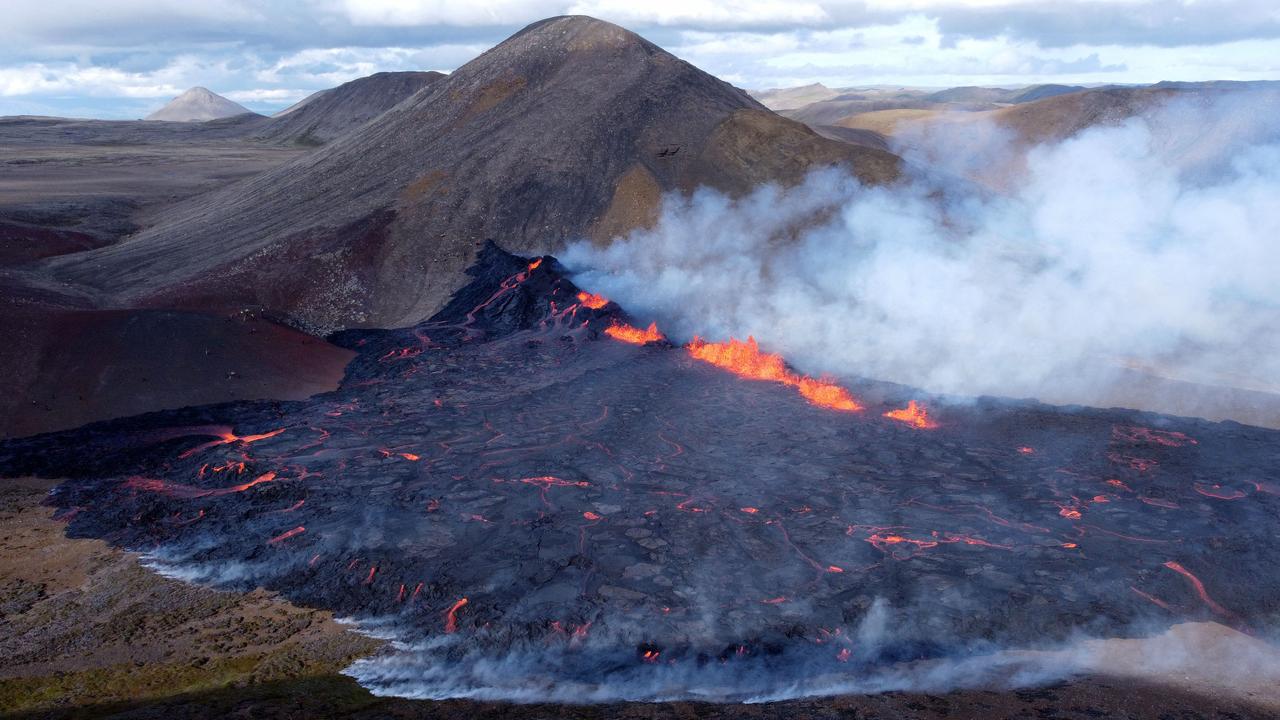[ad_1] An Icelandic town home to thousands of people near the capital Reykjavik is under the threat of an “imminent” volcanic eruption which could o
[ad_1]
An Icelandic town home to thousands of people near the capital Reykjavik is under the threat of an “imminent” volcanic eruption which could obliterate the entire town, according to experts.
Authorities in Iceland have declared a state of emergency after cracks appeared in roads following series of earthquakes caused by rising magma spreading rapidly underground in Grindavik, on the southwestern coast.
A mandatory evacuation was carried out in the town of about 4,000 people, in the early hours of Saturday, with an eruption now expected any moment.
“We are really concerned about all the houses and the infrastructure in the area,” Vidir Reynisson, head of Iceland’s Civil Protection and Emergency Management said.
“The magma is now at a very shallow depth, so we’re expecting an eruption within a couple of hours at the shortest, but at least within a couple of days.”
Molten magma has been accumulating five kilometres under Grindavik, which experts say has created a 15km “corridor” beneath the town – with a volcanic eruption possible anywhere along the intrusion.
Emergency shelters and help centres have opened in several nearby towns, but most Grindavik residents were staying with friends or relatives, local media reported.
Grindavik – around 40 kms southwest of Reykjavik – is located near the Svartsengi geothermal plant, the main supplier of electricity and water to 30,000 residents on the Reykjanes peninsula, as well as a freshwater reservoir.
It is also near the Blue Lagoon geothermal spa resort, a popular tourist destination which closed as a precaution earlier this week.
The most likely scenario would be a fissure opening in the ground near Grindavik.
“We have a fissure that’s about 15 kilometres long, and anywhere on that fissure we can see that an eruption could happen,” Reynisson said.
However he did not rule out the possibility of an eruption on the ocean floor, which would likely cause a large ash cloud.
“It’s not the most likely scenario, but we can’t rule it out because the end of the … fissure goes into the sea,” he said.
The quakes and ground lift caused by the magma intrusion have already caused damage to roads and buildings in Grindavik and its surroundings.
A large crack also tore up the greens on the Grindavik golf course, an image widely shared on social media networks.
Politician Gisli Olafsson said the country is praying that the “worst-case scenarios do not happen”.
He shared on X: “The situation in Grindavik continues to become even more grave than before. The town has already suffered considerable damage from the earthquakes and from the shifts in the ground as the magma thrusts itself upwards.”
He said there is a chance that the eruption could occur under the ocean, resulting in an explosive eruption and extensive ash clouds.
“Scientists have warned that they may not be able to give any further warning of when the magma reaches the surface, making it quite dangerous to go in there,” he added.
‘Unprecedented’ magma flow’
The Icelandic Meteorological Office (IMO) estimates that currently the magma is 800m from breaking ground, and as a result the likelihood of an eruption of Fagradalsfjall volcano is “high”.
While the IMO had for several days observed magma accumulating under the Earth’s surface at a depth of about five kilometres, it said late Friday that the magma had begun rising vertically in a dike.
“This magmatic dike has been shallowing and the top depth has now been assessed to be 800 metres under the surface,” IMO’s volcanic hazards co-ordinator Sara Barsotti told AFP late Saturday.
She said experts were surprised by the amount of lava and the speed at which it was accumulating.
“What we are seeing now is an unprecedented event. We are talking about velocities for this process and volumes or inflow rates that are much higher than what we have seen on the peninsula so far.” Three eruptions have taken place on the Reykjanes peninsula in recent years near the Fagradalsfjall volcano: in March 2021, August 2022 and July 2023 – all far from any infrastructure or populated areas.
The Earth’s crust has been fractured “so much over the past three years” by those eruptions, “helping magmatic fluids in finding their path faster”, Barsotti explained.
Prior to the March 2021 eruption, the Reykjanes peninsula had been dormant for eight centuries.
Volcanologists believe the new cycle of increased activity could last for several decades or centuries.
Situated in the North Atlantic, Iceland straddles the mid-Atlantic Ridge, a crack in the ocean floor separating the Eurasian and North American tectonic plates.
A massive eruption in April 2010 at another Iceland volcano – Eyjafjallajokull, in the south of the island – forced the cancellation of some 100,000 flights, leaving more than 10 million travellers stranded.
– With AFP
[ad_2]
Source link



COMMENTS